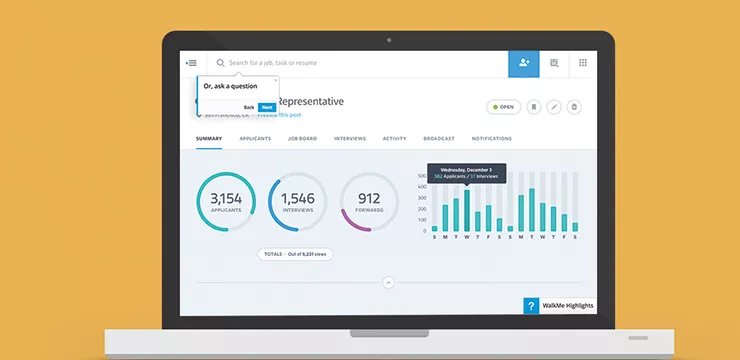Your business deals with hundreds or even thousands of new employees every year. Each new employee has varying levels of experience and skills, and few roles are standard in the modern workplace.
This creates a problem: the array of services that employees need to perform their roles means that employee onboarding is complex.
Make employee onboarding easier than ever.
Employee Onboarding Involves Multiple Platforms
New employees, for example, use the company’s HR platform for a range of processes, such as vacation requests and expenses claims. Deloitte’s Josh Bersin says the HR technology market is in transformation. He quotes CB Insights in his technology disruptions research report, which shows how investors spent $2.4 billion on HR technology start-ups through 2015, which was a 62% increase on the previous year.

HR platforms are just the starting point. New employees have to use a series of tools in their day-to-day roles. Cloud computing has made it easier for businesses to source tools for a range of tasks, such as customer relationship management (CRM) and enterprise resource planning (ERP). Some of these systems might be unfamiliar to new employees. This can make it hard for new employees to adapt to using each new system and then add value.
Complex Employee Onboarding is Expensive
New employees need to understand how to use the key tools for their roles as part of the onboarding process. This helps explain why firms spend such huge amounts on training new employees. Companies spent $814 per learner last year compared with $702 through 2015, according to the 2016 Training Industry Report. Those figures quickly add up when you are trying to keep a tight grip on learning and development budgets.
Cost is not your only concern. Any individual who spends time training, spends less time working. No company wants its new employees to spend any more hours than what is necessary learning how to use tools and systems. Employees create value when they understand how technology will help them to fulfill their roles effectively.
Provide effortless training with step-by-step guidance. Try it today.
How can technology help alleviate employee onboarding challenges?
Your business faces the complex challenge of sourcing, hiring and onboarding people every day. The good news is that innovative guidance platforms can ensure your new employees use the tools and systems they will need to perform their roles. The latest Digital Adoption Platforms (DAPs) exist to help you train your staff cost-effectively and quickly.
Your business can use DAPs to help new employees make the most of the developments in HR technology and other business applications. Such platforms offer step-by-step, real-time guidance, which lets new employees hit the ground running.

This style of learning boosts new employees’ confidence. And you can use a DAP to keep skills refreshed as new tools are introduced. These systems also allow you to track and trace training. And, they provide in-depth analytics to check the success of your onboarding methods.
You can claim a free WalkMe demo and improve your employee onboarding today.
Bringing new employees up to speed can be complicated but it doesn’t have to be an intractable challenge. Your business can use a DAP to simplify and improve its onboarding processes.
Using a DAP is the best way to decrease employee onboarding time and cost. For example, Meadows Office Interiors uses WalkMe’s DAP to create a simple and efficient onboarding process that has helped create a 50% decrease in the time and cost of training new users.

